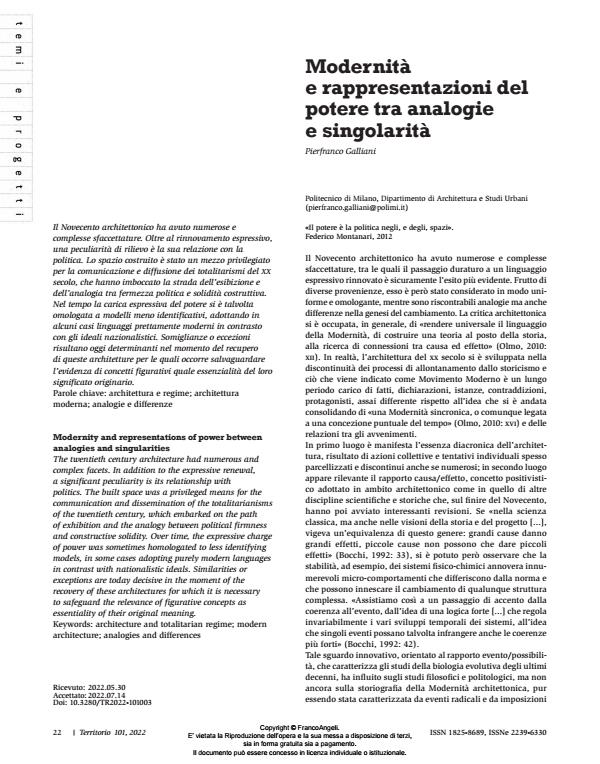Modernity and representations of power between analogies and singularities
Journal title TERRITORIO
Author/s Pierfranco Galliani
Publishing Year 2023 Issue 2022/101
Language Italian Pages 11 P. 22-32 File size 652 KB
DOI 10.3280/TR2022-101003
DOI is like a bar code for intellectual property: to have more infomation
click here
Below, you can see the article first page
If you want to buy this article in PDF format, you can do it, following the instructions to buy download credits

FrancoAngeli is member of Publishers International Linking Association, Inc (PILA), a not-for-profit association which run the CrossRef service enabling links to and from online scholarly content.
The twentieth century architecture had numerous and complex facets. In addition to the expressive renewal, a significant peculiarity is its relationship with politics. The built space was a privileged means for the communication and dissemination of the totalitarianisms of the twentieth century, which embarked on the path of exhibition and the analogy between political firmness and constructive solidity. Over time, the expressive charge of power was sometimes homologated to less identifying models, in some cases adopting purely modern languages in contrast with nationalistic ideals. Similarities or exceptions are today decisive in the moment of the recovery of these architectures for which it is necessary to safeguard the relevance of figurative concepts as essentiality of their original meaning.
Keywords: architecture and totalitarian regime; modern architecture; analogies and differences
Pierfranco Galliani, Modernità e rappresentazioni del potere tra analogie e singolarità in "TERRITORIO" 101/2022, pp 22-32, DOI: 10.3280/TR2022-101003